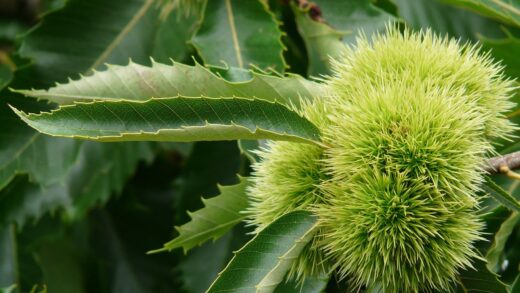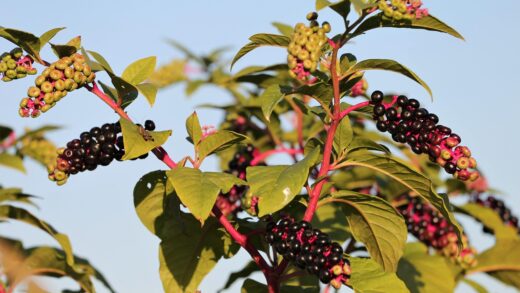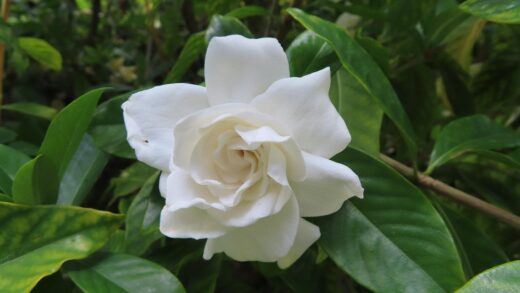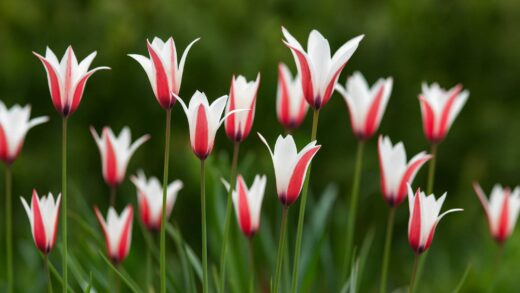While the Dieffenbachia is a relatively robust and resilient houseplant, it is not immune to the threats posed by various pests and diseases. Proactive care and a vigilant eye are the best defenses against potential infestations and infections that can compromise the plant’s health and mar its beautiful foliage. Most problems, if caught early, can be managed effectively with simple interventions. Understanding the common culprits, from tiny sap-sucking insects to insidious fungal pathogens, empowers a grower to identify issues promptly and take the appropriate steps to protect their plant and restore it to full health.
Pests are often the most visible threat, with common indoor nuisances like spider mites, mealybugs, and scale insects finding the large leaves of the Dieffenbachia to be an attractive habitat. These pests typically feed by piercing the plant’s tissues and sucking out the sap, which weakens the plant, causes discoloration and distortion of the leaves, and can lead to significant decline if left unchecked. Regular inspection of the plant, paying close attention to the undersides of leaves and the joints where leaves meet the stem, is crucial for early detection, as these are the preferred hiding spots for many of these intruders.
Diseases, on the other hand, are often caused by microscopic pathogens like fungi and bacteria, and their development is frequently linked to environmental conditions. Issues such as root rot, fungal leaf spots, and bacterial blights are almost always a consequence of excess moisture, either in the soil or on the foliage, combined with poor air circulation. Therefore, many of the most common Dieffenbachia diseases can be prevented simply by adhering to proper watering practices and ensuring the plant is in a location with adequate airflow.
Ultimately, the best strategy for managing both pests and diseases is an integrated approach that prioritizes prevention. This involves providing the plant with its ideal growing conditions—proper light, water, and nutrition—to keep it strong and less susceptible to attack. It also involves practicing good sanitation, such as removing dead leaves promptly and isolating new plants before introducing them to an established collection. When problems do arise, choosing the least toxic treatment option first, such as physical removal or insecticidal soaps, is a responsible way to manage the issue without resorting to harsh chemicals.
Common houseplant pests
One of the most frequent and troublesome pests to afflict Dieffenbachia is the spider mite. These tiny arachnids are difficult to see with the naked eye but their presence is betrayed by the damage they cause. They feed by sucking the contents out of individual plant cells, leading to a fine, stippled or speckled pattern of yellow or white dots on the leaves. In more advanced infestations, you will notice fine, silky webbing, particularly on the undersides of leaves and at the leaf axils. Spider mites thrive in hot, dry conditions, so increasing humidity around the plant can help to deter them.
More articles on this topic
Mealybugs are another common sap-sucking pest, easily identified by their appearance as small, white, cottony masses clustered on the plant. They tend to congregate in protected areas, such as where the leaves join the main stem or along the veins on the underside of the foliage. As they feed, they excrete a sticky substance called honeydew, which can attract sooty mold and give the leaves a shiny, sticky appearance. Mealybugs can weaken the plant over time, causing yellowing leaves and stunted growth if the infestation becomes severe.
Scale insects present a more camouflaged threat. Adult scale insects are immobile and appear as small, hard, brownish or tan bumps firmly attached to the stems and the undersides of leaves. Like mealybugs, they feed on the plant’s sap and excrete honeydew. Their hard, waxy outer shell protects them from many contact insecticides, making them particularly difficult to eradicate once an infestation is established. The immature “crawler” stage is the most vulnerable, as the young insects move around the plant before settling down to form their protective covering.
Aphids and thrips can also occasionally bother Dieffenbachia. Aphids are small, pear-shaped insects that cluster on new growth and the undersides of leaves, sucking sap and causing distorted growth. Thrips are tiny, slender insects that scrape at the leaf surface and suck the leaking sap, leaving silvery or stippled patches and tiny black specks of frass (excrement). Both of these pests can reproduce rapidly and cause significant cosmetic damage, and in the case of thrips, can also transmit plant viruses. Early detection and treatment are key to controlling all of these common pests.
Fungal and bacterial diseases
By far the most common and deadly disease to affect Dieffenbachia is root rot, which is caused by various soil-borne fungi, most notably Pythium and Phytophthora. This disease is not an aggressive infection of a healthy plant, but rather an opportunistic one that takes hold when the roots are compromised by a lack of oxygen due to waterlogged soil. The symptoms above ground include wilting, yellowing and dropping of lower leaves, and a general failure to thrive. Below the soil, the roots will be dark, mushy, and foul-smelling. Prevention through proper watering and the use of a well-draining soil mix is the only effective cure.
More articles on this topic
Fungal leaf spot diseases, caused by pathogens such as Colletotrichum or Myrothecium, can also occur, especially in overly humid conditions with poor air circulation. These diseases typically manifest as circular or irregular-shaped spots on the leaves, which may be tan, brown, or black, and often have a distinct, colored border. The spots may enlarge over time and merge, leading to large areas of dead tissue and potentially causing the leaf to drop prematurely. To manage leaf spot, it is important to avoid getting water on the foliage, improve air circulation around the plant, and remove and destroy any affected leaves to prevent the spores from spreading.
Anthracnose is a specific type of fungal disease that affects many houseplants, including Dieffenbachia. It causes dark, water-soaked lesions on the leaves, often starting at the margins or tips. These lesions expand and can develop concentric rings, sometimes described as a “target” pattern. As with other fungal issues, high humidity and wet foliage create the ideal conditions for anthracnose to develop. Pruning away infected plant material and applying a copper-based fungicide can help to control its spread, but improving environmental conditions is the most critical preventative step.
Bacterial diseases, such as Erwinia blight or Xanthomonas leaf spot, can also infect Dieffenbachia. Erwinia blight is particularly destructive, causing a soft, mushy, and foul-smelling rot that can quickly collapse the entire plant, often starting at the soil line. Xanthomonas causes small, water-soaked spots on the leaves that are often delineated by the leaf veins and may exude a bacterial ooze. Bacterial diseases are notoriously difficult to treat, and often the best course of action is to destroy the infected plant to prevent it from spreading to other houseplants. Prevention through sanitation and proper watering is paramount.
Prevention strategies and plant hygiene
The most effective approach to managing pests and diseases is to prevent them from occurring in the first place. This begins with providing the Dieffenbachia with its optimal growing conditions. A healthy, vigorous plant is naturally more resilient and better able to fend off pests and pathogens than a plant that is stressed by poor light, improper watering, or nutrient deficiencies. Ensuring the plant receives bright, indirect light, is potted in a well-draining soil mix, and is watered and fertilized appropriately is the first line of defense.
Good sanitation practices are also critically important. Regularly remove any yellowing or dead leaves and fallen plant debris from the pot and the surrounding area. This organic matter can harbor fungal spores and provide a hiding place for pests. When pruning or taking cuttings, always use tools that have been sterilized with rubbing alcohol or a dilute bleach solution to prevent the transmission of diseases from one plant to another. Keeping the leaves clean by wiping them down with a damp cloth not only improves photosynthesis but also helps to physically remove pests like spider mites and their eggs.
One of the most common ways that pests and diseases are introduced into a home is on new plants. Therefore, it is essential to thoroughly inspect any new plant before purchasing it and to implement a quarantine period upon bringing it home. Isolate the new plant in a separate room, away from your existing collection, for at least two to four weeks. This isolation period allows time for any hidden pests or latent diseases to become apparent, so you can treat them before they have a chance to spread to your other plants.
Finally, promoting good air circulation around your plants can significantly reduce the risk of fungal and bacterial diseases, which thrive in stagnant, damp conditions. Avoid crowding your plants too closely together. If necessary, you can use a small, oscillating fan set on a low speed in the room to keep the air moving gently. This helps the foliage to dry more quickly after watering or misting and creates a less hospitable environment for the development and spread of pathogenic spores.
Integrated pest management (IPM)
Integrated Pest Management, or IPM, is a holistic and environmentally sensitive approach to dealing with pests that prioritizes the least toxic methods first. The first step in any IPM strategy is accurate identification of the pest. Different pests require different control methods, so it is crucial to know exactly what you are dealing with. Once identified, the next step is monitoring the population. A few isolated mealybugs might not warrant a full-scale intervention, but a rapidly growing population requires action. The goal is not always total eradication but to keep pest populations below a level that causes significant damage.
The first line of defense in an IPM program is physical and mechanical control. This involves manually removing pests from the plant. For pests like mealybugs and scale, a cotton swab dipped in rubbing alcohol can be used to dab and dissolve the individual insects. For spider mites and aphids, a strong spray of water from a shower or hose can be very effective at dislodging a large portion of the population from the leaves. Regularly wiping the leaves with a damp cloth is another simple mechanical control method that helps to keep pest numbers down.
If physical controls are not sufficient, the next step is to use biological or low-toxicity chemical controls. Horticultural oils and insecticidal soaps are excellent options for many soft-bodied insects like aphids, mealybugs, and spider mites. These products work by smothering the pests and must come into direct contact with them to be effective. They have low toxicity to humans and pets and have minimal residual effect in the environment. Neem oil is another valuable tool; it acts as a repellent, a feeding deterrent, and a growth regulator, disrupting the pest’s life cycle.
Systemic insecticides and harsh chemical pesticides should be considered a last resort in an indoor environment. These products can be more effective but also carry greater risks to the health of the occupants of the home, including pets. If their use is deemed necessary, always choose a product specifically labeled for indoor use on houseplants, and follow the application instructions precisely. Always apply such treatments in a well-ventilated area, preferably outdoors, and allow the plant to dry completely before bringing it back inside.
Treating specific infestations and infections
When treating a spider mite infestation, the first step is to isolate the affected plant to prevent them from spreading. Thoroughly spray the entire plant, especially the undersides of the leaves, with water to knock off as many mites as possible. Following this, treat the plant with insecticidal soap or horticultural oil, ensuring complete coverage of all surfaces. Since these treatments do not kill the eggs, repeat applications will be necessary every five to seven days for several weeks to break the life cycle and catch newly hatched mites. Increasing humidity around the plant will also create a less favorable environment for them.
For mealybugs and scale, a more targeted approach is often needed. Begin by using a cotton swab dipped in 70% isopropyl alcohol to spot-treat and kill the visible adult insects. The alcohol dissolves their protective waxy coating. After this manual removal, treat the entire plant with neem oil or insecticidal soap to deal with any unseen crawlers. For heavy scale infestations, you may need to gently scrape the adult scales off with a fingernail or a soft brush before applying the treatment. Persistence is key, as repeat applications will be required to eliminate the infestation completely.
If you have diagnosed a fungal leaf spot disease, the first action is to carefully prune off and dispose of all affected leaves to reduce the source of fungal spores. Be sure to sterilize your pruning tool between each cut. Next, address the environmental conditions that allowed the fungus to thrive. Improve air circulation, reduce humidity if it is excessive, and be meticulous about watering only the soil and keeping the foliage dry. If the disease continues to spread, a copper-based or sulfur-based fungicide, applied according to the label’s instructions, can be used to protect the healthy foliage from infection.
In the unfortunate event of a severe root rot diagnosis, drastic action is required. Remove the plant from its pot and wash all the soil from the roots. Using a sterile knife or shears, carefully cut away all of the dark, mushy, and rotted roots, leaving only the healthy, firm, white tissue. You may need to remove a significant portion of the root system. After pruning the roots, it can be beneficial to douse the remaining healthy roots in a fungicide solution. Finally, repot the plant in a clean pot with fresh, sterile, and very well-draining potting mix. Water sparingly until the plant shows signs of recovery and new growth.


















